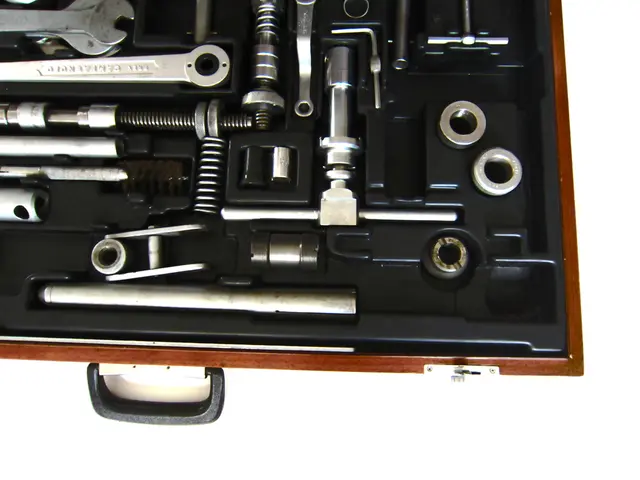Nvidia's AI Factory Vision gains clarity with the introduction of the Rubin CPX
In a significant move, Nvidia has announced the introduction of the Rubin CPX, an AI GPU inference accelerator platform designed for high-end generational applications. This new member of Nvidia's Vera Rubin data center AI product family is set to revolutionize the AI industry.
The Rubin CPX, designed to complement the standard Rubin AI Graphics Processing Unit (GPU) in providing high-value inference content generation, boasts several impressive features. It is equipped with 128GB of GDDR7 memory and hardware encode and decode engines to support video generation. Furthermore, it is capable of processing a one-million-token context window and delivering 30 petaFLOPs of performance using the NVFP4 data format.
Nvidia's decision to introduce the Rubin CPX comes as no surprise, given the company's long-standing focus on the entire data center as a single system to ensure the highest possible performance efficiency and return on investment (ROI). Tirias Research, a consultancy that has worked with Nvidia and other AI companies, has long forecasted the need for a variety of AI inference accelerators from industry giants like AMD, Intel, Nvidia, and others.
The Rubin CPX is designed to work in conjunction with the Vera CPU and Rubin AI GPU. Nvidia plans to offer the Rubin CPX integrated into a single rack with the Vera CPU and Rubin AI GPU, creating the Vera Rubin NVL144 CPX. This rack, configured with 36 Vera CPUs, 144 Rubin AI GPUs, and 144 Rubin CPXs, offers eight exaFLOPs of NVFP4 performance, a 7.5x increase over the GB300 NVL72 rack.
The vast majority of AI processing across the industry is already inference processing, with the programmable efficiency of AI GPUs being a significant factor. The Rubin CPX's ability to handle multiple AI models concurrently, thanks to its capacity to be partitioned, further solidifies its position in the AI processing landscape.
The semiconductor industry's nature, with new technology leading to rapid innovation followed by the emergence of standards, is the first key reason why GPUs will remain one of the best solutions for both AI training and AI inference processing. No two AI models are the same, and there will be an opportunity to optimize the hardware around an AI model or groups of models.
Future Nvidia AI GPU architectures are likely to include tailored variants focused on different AI processing segments, such as smaller AI models. Approaches like integrating Intel x86 CPUs with Nvidia GPUs in multi-chiplet System on Chips (SoCs) and packaging innovations like Foveros for multi-chip solutions are expected to enable specialization for various use cases beyond current large-scale models.
The potential return on investment (ROI) for the Vera Rubin NVL144 CPX rack is impressive. A $100 million CAPEX investment could result in up to a $5 billion return, representing a 30x to 50x return on investment.
In conclusion, the Rubin CPX represents a significant step forward in AI processing capabilities. Its introduction underscores Nvidia's commitment to driving innovation in the AI sector and delivering solutions that meet the evolving needs of the industry.
Read also:
- U Power's strategic collaborator UNEX EV has inked a Letter of Intent with Didi Mobility to deploy UOTTA(TM) battery-swapping electric vehicles in Mexico.
- Commercial-grade hydrogen enhancement systems manufacturing initiated by H2i Technology
- Gold nanorod market to reach a value of USD 573.3 million by 2034, expanding at a compound annual growth rate (CAGR) of 11.7%
- Machine Learning and Forecasting Advancements in Supply Chain Resilience: Insights from Jaymalya Deb







